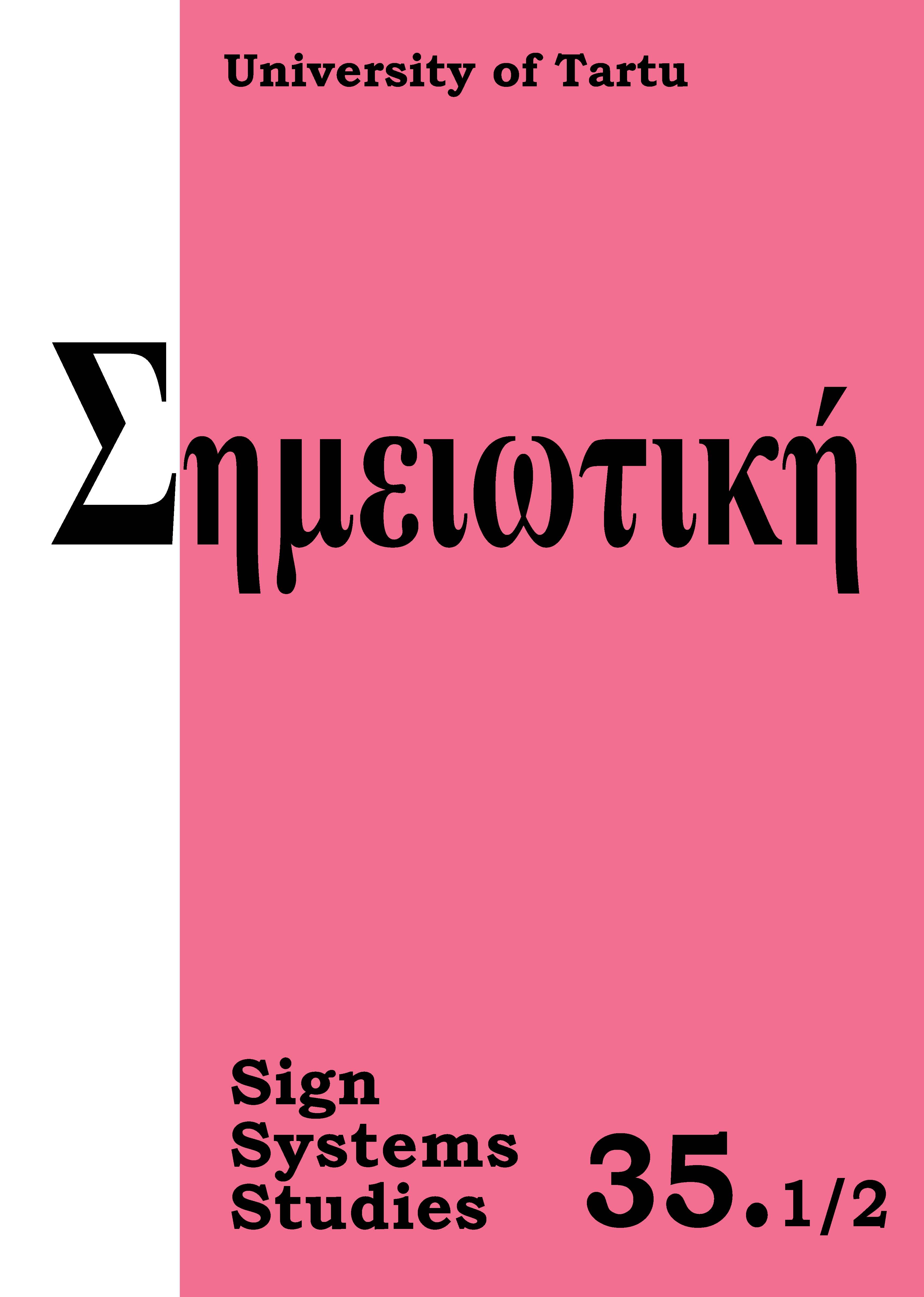Toward a concept of pluralistic, inter-relational semiosis
DOI:
https://doi.org/10.12697/SSS.2007.35.1-2.01Abstract
Brief consideration of (1) Peirce’s ‘logic of vagueness’, (2) his categories, and (3) the concepts of overdetermination and underdetermination, vagueness and generality, and inconsistency and incompleteness, along with (4) the abrogation of classical Aristotelian principles of logic, bear out the complexity of all relatively rich sign systems. Given this complexity, there is semiotic indeterminacy, which suggests sign limitations, and at the same time it promises semiotic freedom, giving rise to sign proliferation the yield of which is pluralistic, inter-relational semiosis. This proliferation of signs owes its perpetual flowing change in time to the inapplicability of classical logical principles, namely Non-Contradiction and Excluded-Middle, with respect to elements of vagueness and generality in all signs. Hempel’s ‘Inductivity Paradox’ and Goodman’s ‘New Riddle of Induction’ bear out the limitation and freedom of sign making and sign taking. A concrete cultural example, the Spaniards’ world including the Virgin of Guadalupe and the Aztecs world including their Goddess, Tonantzín, are given a Hempel-Goodman interpretation to reveal the ambiguous, vague, and complex nature of intercultural sign systems, further suggesting pluralism. In fact, when taking the ‘limitative theorems’ of Gödel, Turing, and Chaitin into account, pluralism becomes undeniable, in view of the inconsistency-incompleteness of complex systems. A model for embracing and coping with pluralism suggests itself in the form of contextualized novelty seeking relativism. This form of pluralism takes overdetermination, largely characteristic of Peirce’s Firstness, and underdetermination largely characteristic of Peirce’s Thirdness, into its embrace to reveal a global context capable of elucidating local contexts the collection of which is considerably less than that global view. The entirety of this global context is impossible to encompass, given our inevitable finitude and fallibilism. Yet, we usually manage to cope with processual pluralism, within the play of semiosis.


